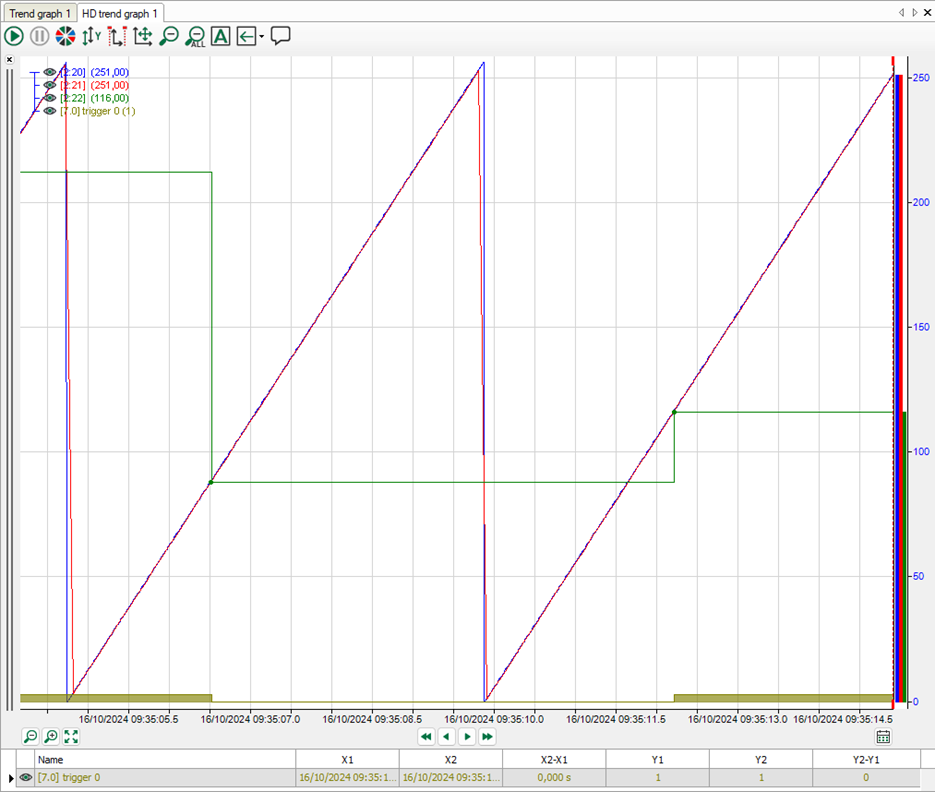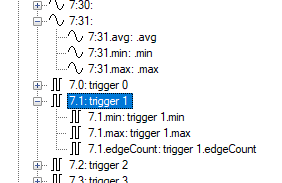Non-equidistant data can be generated in various ways, e.g. via modules that support an external timestamp (e.g. IEC 61850 modules) or via a data store profile that records other signals using a trigger signal.
In HD store, the data is saved as raw data and in up to 5 aggregation levels. The following aggregation levels are preset:
-
In the raw data level, the non-equidistant data is saved as time-value pairs.
-
The aggregation levels have a time base of 200 ms, 10 s, 5 minutes, 2 hours and 1 day.
For analog signals, the average, minimum and maximum of the aggregated measuring points are saved for each aggregation stage; for digital signals, the minimum, maximum and edge count are saved.
In the data store profiles in ibaPDA, you can use the profile type Time, ibaHD to customize the time base for each aggregation level, see Define data storage profiles.
Example

The green signal is a non-equidistant version of the blue signal: Each time the value of the yellow signal changes, a value is saved. These values are displayed as green dots. The signal is considered constant until the next value is reached. For this reason, the green signal is displayed in steps. As long as you are in the raw data level, you will see the dots. If you zoom out further until the first aggregation level is reached, no more points are drawn.
If you have activated the Show sub-signals option in the ibaHD signal tree, the values for minimum, maximum and average for analog signals and the values for minimum, maximum and number of edges for digital signals are displayed from the aggregation levels.
